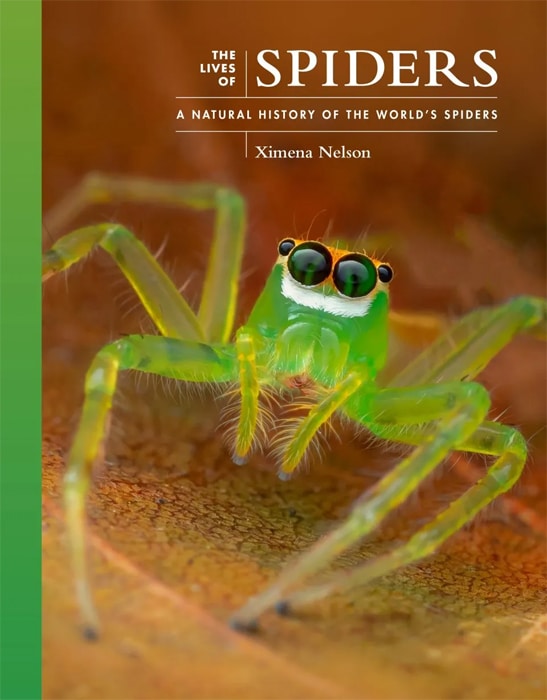| The Lives of Spiders | A Natural History of the World’s Spiders | Ximena Nelson | Princeton University Press | 2024 | Hardback | 288 pages, 150 colour photos, b/w illustrations, and colour distribution maps | ISBN: 9780691255026 |

The Publisher’s View:
A beautifully illustrated guide to the natural history and breath-taking diversity of spiders around the world
Spiders are dominant predators in virtually every terrestrial ecosystem on the planet. A marvel of evolution with species numbering in the tens of thousands, they have been walking the earth since before the dinosaurs. Spiders manipulate the silk strands of their webs to act as a sensory field, which vibrates across wide frequencies that they can read in detail, while young spiders spin silk lines that interact with the electrical fields in the atmosphere, enabling them to balloon across huge distances. Some spiders even gather in groups to impersonate ants in astonishing displays of collective mimicry. The Lives of Spiders explores these and other wonders, blending stunning imagery, lively writing, and the latest science to explore the natural history of the world’s diverse arachnid life.
– Features a wealth of colour illustrations
– Sheds invaluable light on the life history, ecology, and stunning diversity of spiders
– Covers silk and web building, venoms, predators and prey, mating and dancing, spider cognition, and much more
– Discusses the impacts of human activity on spiders
The Author: Ximena Nelson is professor of animal behaviour at the University of Canterbury in New Zealand. Her work has been published in a range of scientific journals, including Biological Reviews, Animal Behaviour, the Journal of Experimental Biology, and Animal Cognition.
Fatbirder View:
Did I want to know that there are millions of spiders with a myriad of ways to trap and kill their prey and hide in plain sight? Actually, yes! I can’t say I am fond of arachnids… not least because I am married to a complete, genuine arachnophobe. I’ve spent half a life time steering her away from encounters with some of the really big hairy ones and not a few deadly ones. Her fear is not groundless, she has even been bitten by one of their cousins, a scorpion.
I’ll never love them, but I do recognise their vital place in the environment, just like venomous snakes that really frighten me, I know they are needful and stop us being plagued by equally un-cuddly critters.
One has to admire their variety and the fact that they were here before we were and will doubtlessly out last us!
Arachnophobes will shudder at the stunning clarity of many of the excellent photos and cringe at the many we find hideous. Personally I was also struck with the beauty of some, their colour and raiment.
Yet another large tome that can be dipped in whenever the fancy takes you, not just Halloween. Each visit will inform and astound you!
Fatbirder
